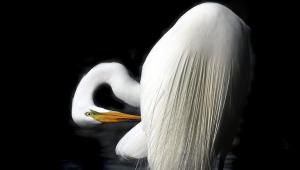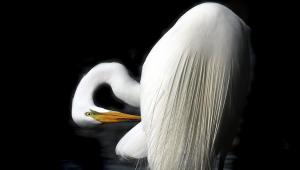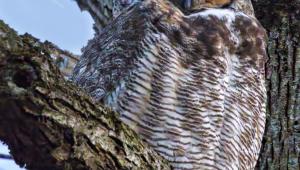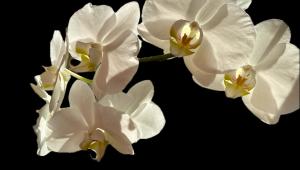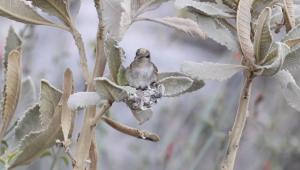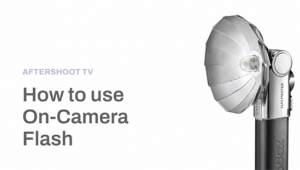Pro's Choice; Chris Collins, Problem Solver; Bringing Still Life To Life Takes Ingenuity, And The Right Tools
How do you photograph a duck pumping gas? When Aflac came to New York advertising photographer Chris Collins with just such a dilemma, this problem solver had the answer and years of experience to back him up. One duck was a given: they'd use a very sophisticated puppet designed (and finessed over the years) by noted Hollywood model-maker Stan Winston. But they'd also need a live duck and a duck wrangler. Collins' experience working with everything from monkeys to snakes meant this would be no more challenging for him than, say...topping off a gas tank.
Aflac Ducks |
|
 |
|
|
For nearly all of his 30 years as a pro, Collins rode the current of the 8x10
and 4x5 formats, which were in heavy demand by clients. More to the point, clients
wanted transparencies. The view camera, with its array of swings and tilts,
carried the tide.
A few short years ago the current shifted. Clients began to change their attitudes
and were asking for images shot digitally. While Collins' film-based 8x10s
gathered dust, a pair of 4x5 Toyo Views and a Hasselblad--all digitally
enabled--moved to the forefront. These cameras carry the day with the help
of Phase One digital backs--a 39-megapixel P 45 and a 22-megapixel P 25
(www.phaseone.com). (The
medium format comes to the fore when the picture does not require swings and
tilts.) Collins also uses a Nikon D-SLR on occasion when he needs record shots
or small file sizes, as with stock shots that may be used in more complex composite
images. Each format naturally has a selection of lenses suited to the task at
hand, with short telephotos and moderate wide angles doing most of the work.
Considering the high cost of a digital back, why go the distance with that P
45, you ask? "For the still life photographer, that added detail makes
a difference," Collins observed. "What's more, the larger
back gives you more leeway in cropping. The downside is storage. We need more
storage space for the larger files." For that the studio has several large
external drives that are used with the Mac system. And it should be noted that
they use Photoshop CS3 for all their digital work. Toward that end, Collins
has two talented digital artists, Dan Smith and Leila Sutton.
Meow Mix |
|
 |
|
|
Strobe And Tungsten Take Turns
At the heart of Collins' strobe lighting sits Speedotron (www.speedotron.com).
"It's a workhorse and has proven reliable over the years,"
Collins commented. While less costly to purchase, this largely mechanical power
pack-based system has also been less costly to maintain over the years than
the high-tech lighting that grabs more attention these days. These features
are of paramount importance to a busy studio. The 2400 and 4800 ws power packs
deliver plenty of light to meet the needs of a still life set. "In fact,
we constantly find ourselves having to turn the power all the way down."
One of the studio's specialties is liquid pours, where you freeze liquids
in midair. That was evident in a recent shot done for Meow Mix. To achieve the
required motion-stopping speeds with a system such as this required some real
ingenuity on Collins' part. And he found a simple solution: Collins connects
a quad head to the power pack using "Y" splitters, effectively shortening
flash duration further (he gets these Y-splitters custom-made at Flash Clinic
in New York City--www.flashclinic.com).
The shorter the flash duration, the better the flash is at freezing motion.
FruitSimple |
|
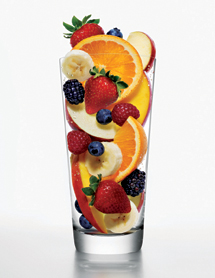 |
|
|
Not every set needs motion-stopping speeds. Having the ability to visualize the effect of the lighting is of paramount importance on a still life set. For that Collins uses Arri tungsten lights. One of many examples where these lights came to the fore was on a set capturing the glare-free qualities in Schott glass used in a bakery shop set. But here Collins took advantage of the warm quality of tungsten and combined it with the cool quality of strobe to truly simulate a storefront display.
- Log in or register to post comments
















